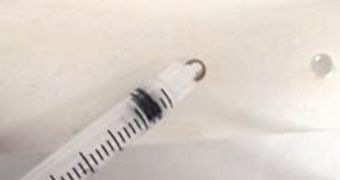Healing bone fractures is today a lengthy process, that requires months of rest at home depending on the broken bone, and several months of recovery and physiotherapy afterwards. But what if healing a bone could take considerably less? Experts now create a material that could help do just that.
Brown University associate professor of engineering Thomas Webster took a hard look at bone fractures and healing times, and determined that people who suffer hip fractures, for example, tend to remain tied to their beds for months on end.
As such, he thought, why not develop a substance that, once injected in the bones, would significantly reduce the down time patients experience? The answer to this question is a new type of nanomaterial.
The substance was synthesized in such a way that it quickly hardens once exposed to the normal temperature of the human body. From a liquid, it turns into a faithful bone replica, featuring the same properties as the actual tissue.
The development of the new material is now heavily underway, and animal trials are scheduled to begin soon. Littleton, Massachusetts-based medical device maker Audax Medical has signed a deal with Brown on the new technology.
According to the expert, the material, a twin-base linker, will be developed under the name Arxis. The substance features the same type of nucleic acids as DNA does, Technology Review reports.
Each of these molecules features two covalent bonds, which enables it to link to other molecules, forming a tube. The bonding reaction only takes place at the average temperature of the human body.
“It self-assembles into a nano structure, emulates natural tissue, solidifies quickly at body temperature, and can be made to match the mechanical properties of the tissue you inject it into,” explains Webster.
One of the problems with the material though is whether or not it will be able to support weight in the same way real bones can. Webster says his material has only undergone lab tests so far, but he believes strongly that it will be able to withstand the same tension and pressure actual bones can.
“It will have that strength after solidifying in the body – after a couple of minutes,” he explains. One clear advantage of the new material over any others is the fact that it will replace metal plates.
At this point, complex fractures are treated by inserting metal plates, pipes and screws into the bone, in order to make it resistant. But metal cannot grow, and so implanting it is a problem, especially in kids.
Audax president and CEO Mark Johanson says he has already received $1 million in funds thus far, and adds that more money are expected to finance this material soon. An injection with the material will most likely cost between $1,000 and $1,500.
“The material can be processed and manufactured relatively inexpensively, which positions it well for the higher-volume-procedural market,” Johanson concludes.

 14 DAY TRIAL //
14 DAY TRIAL //